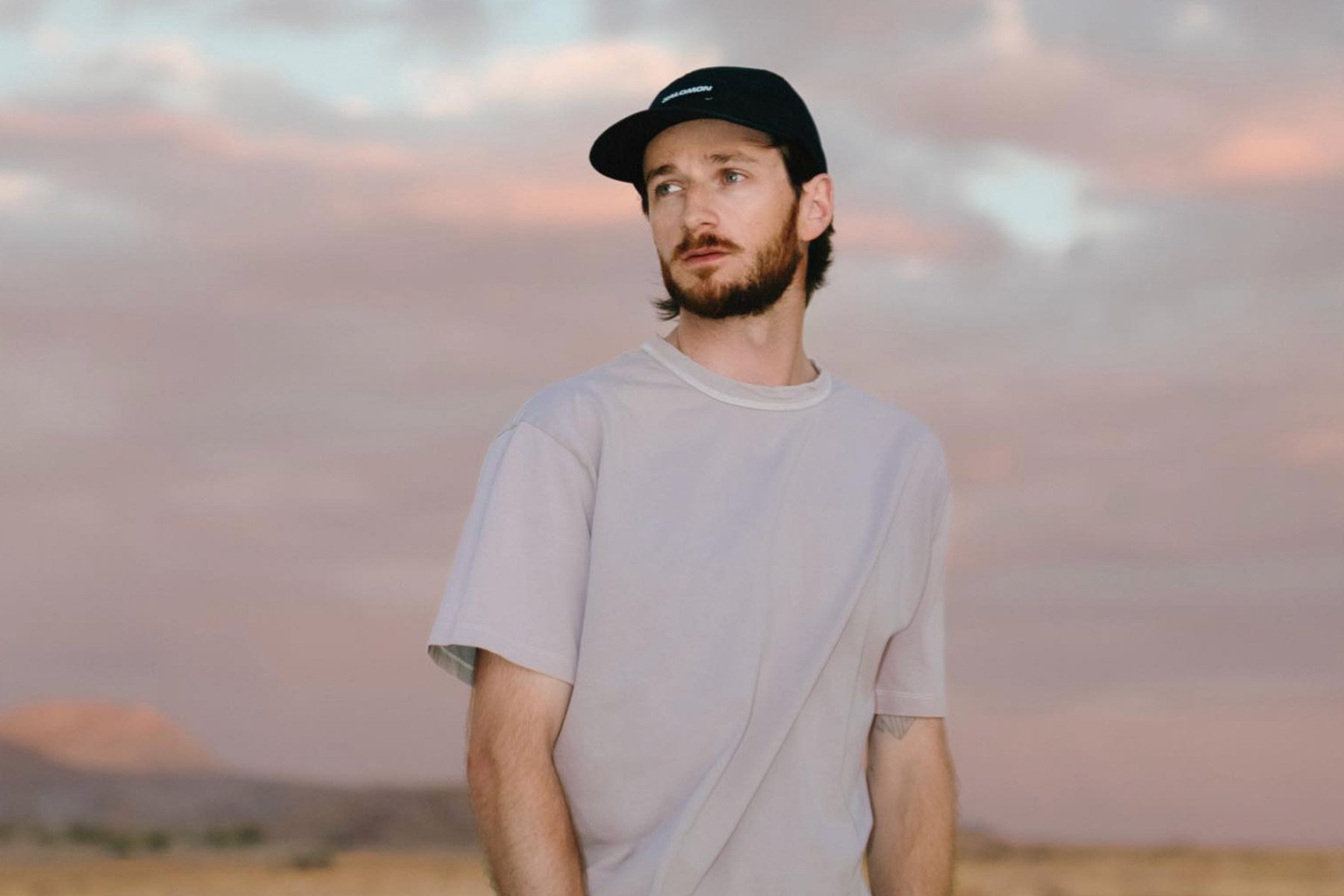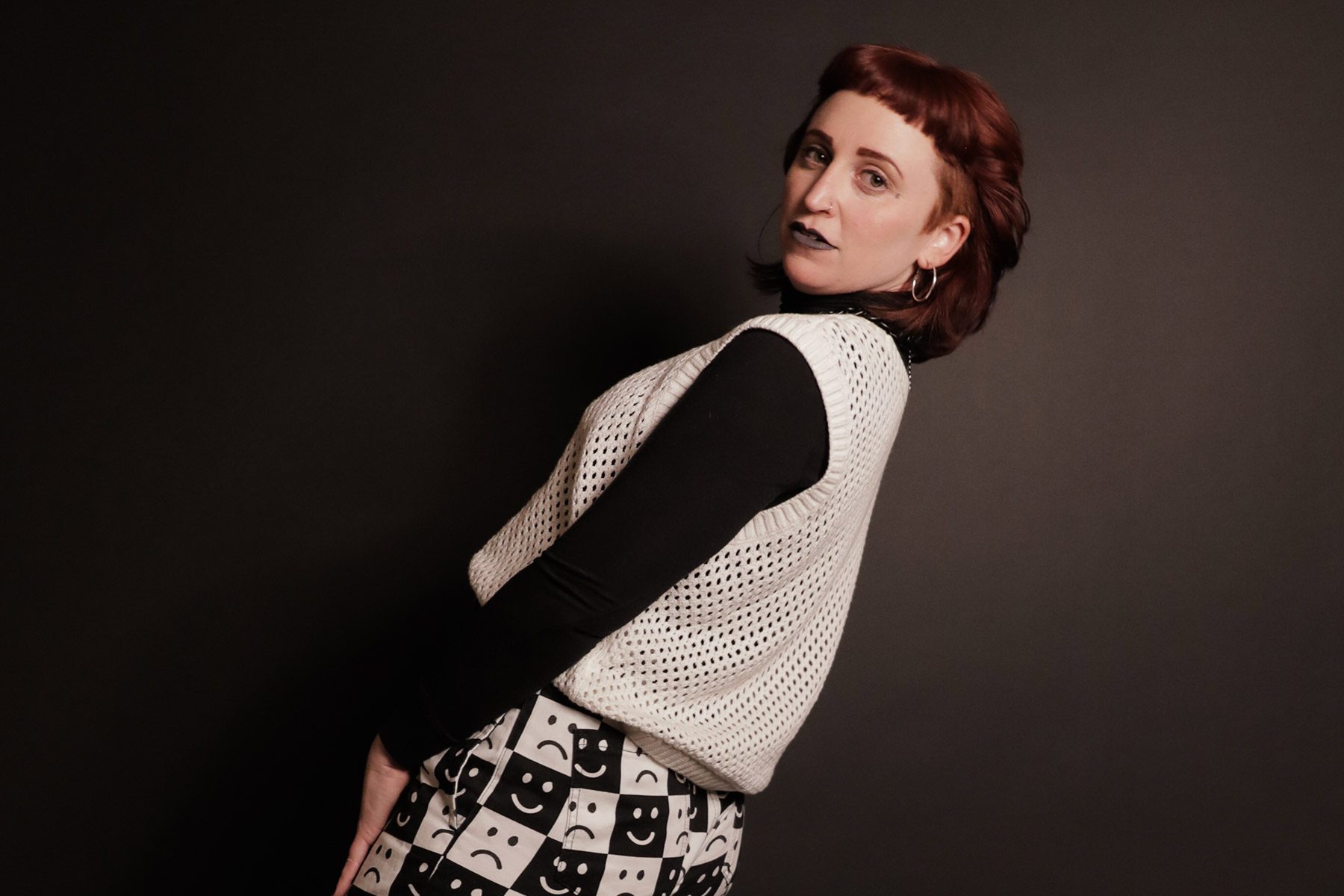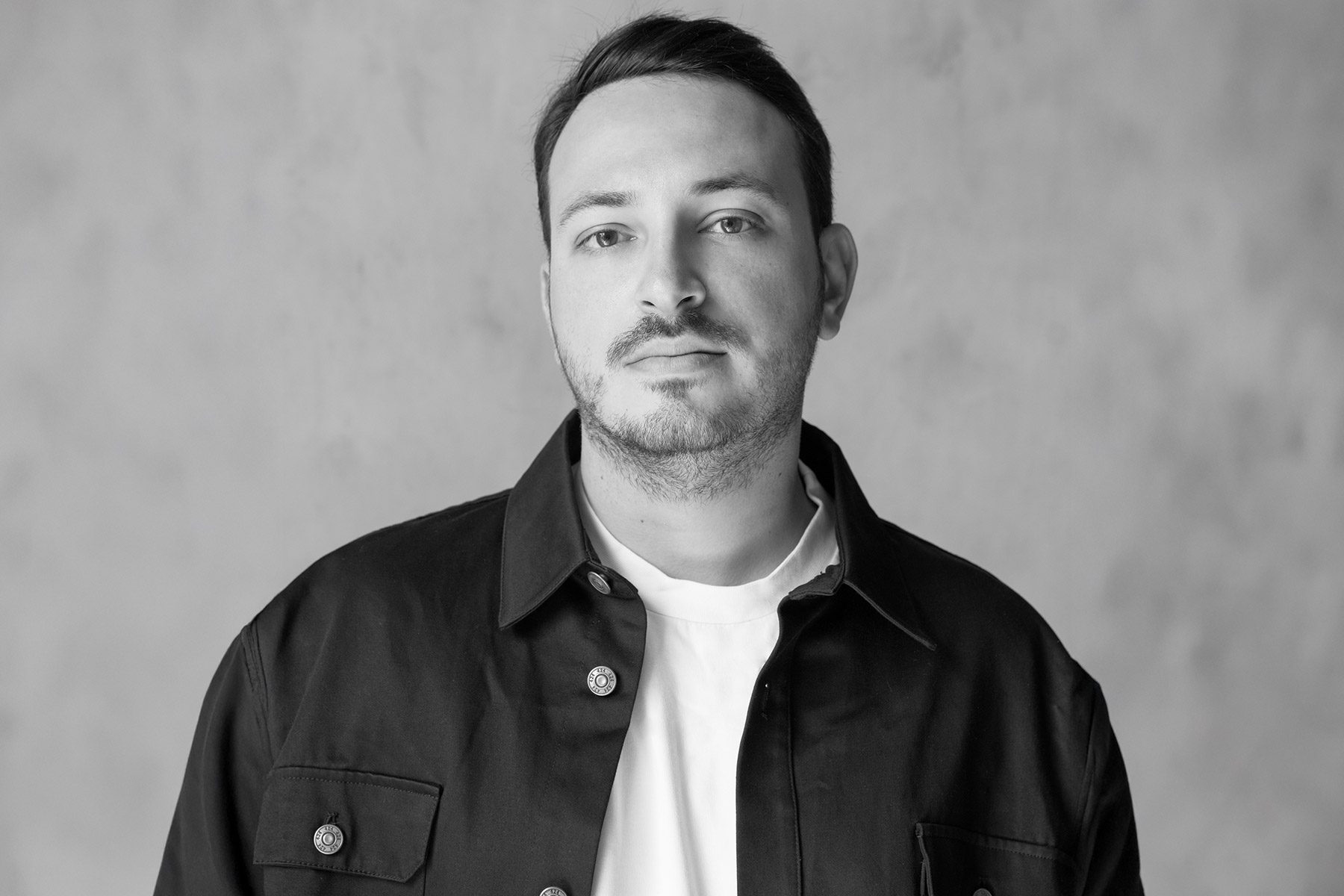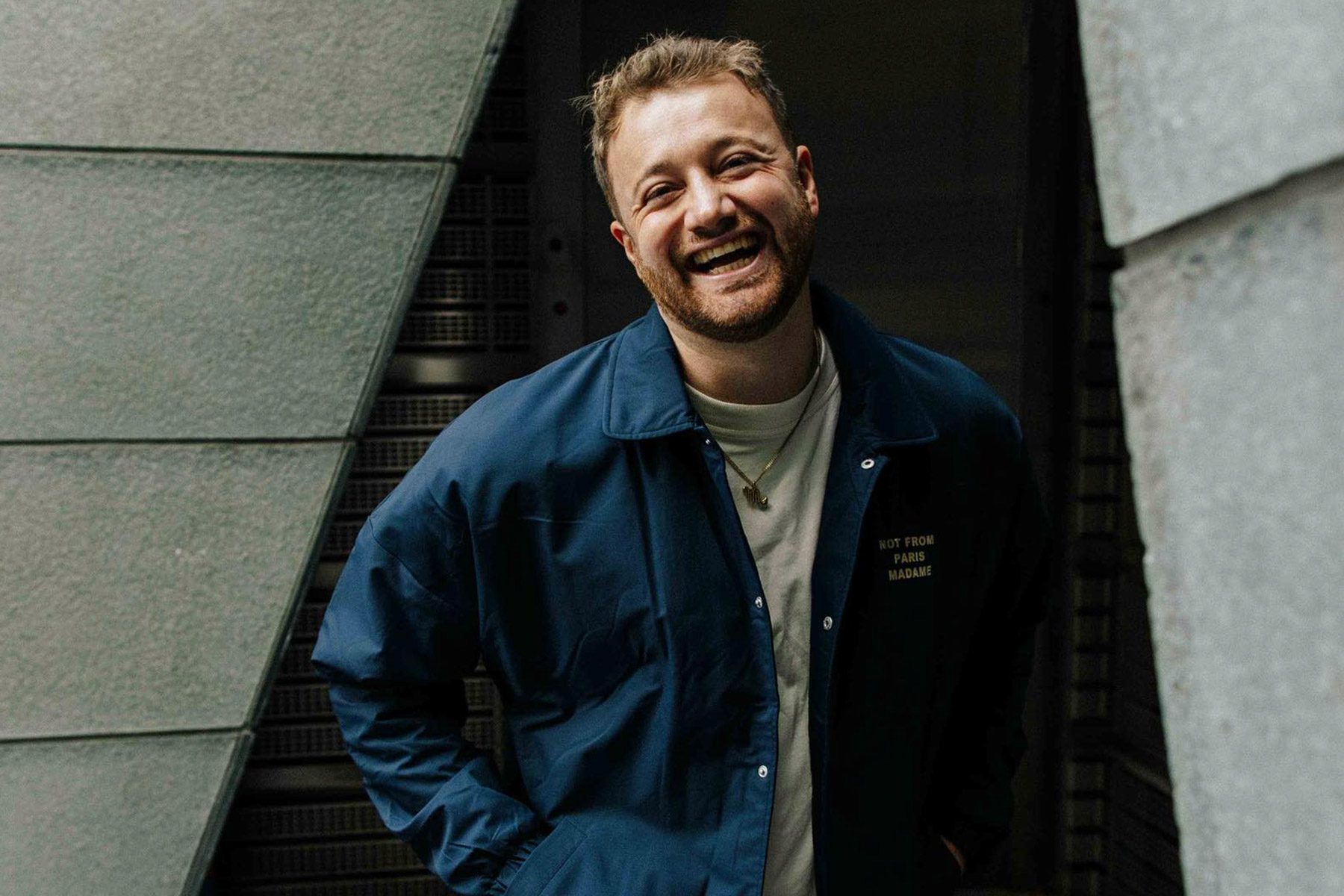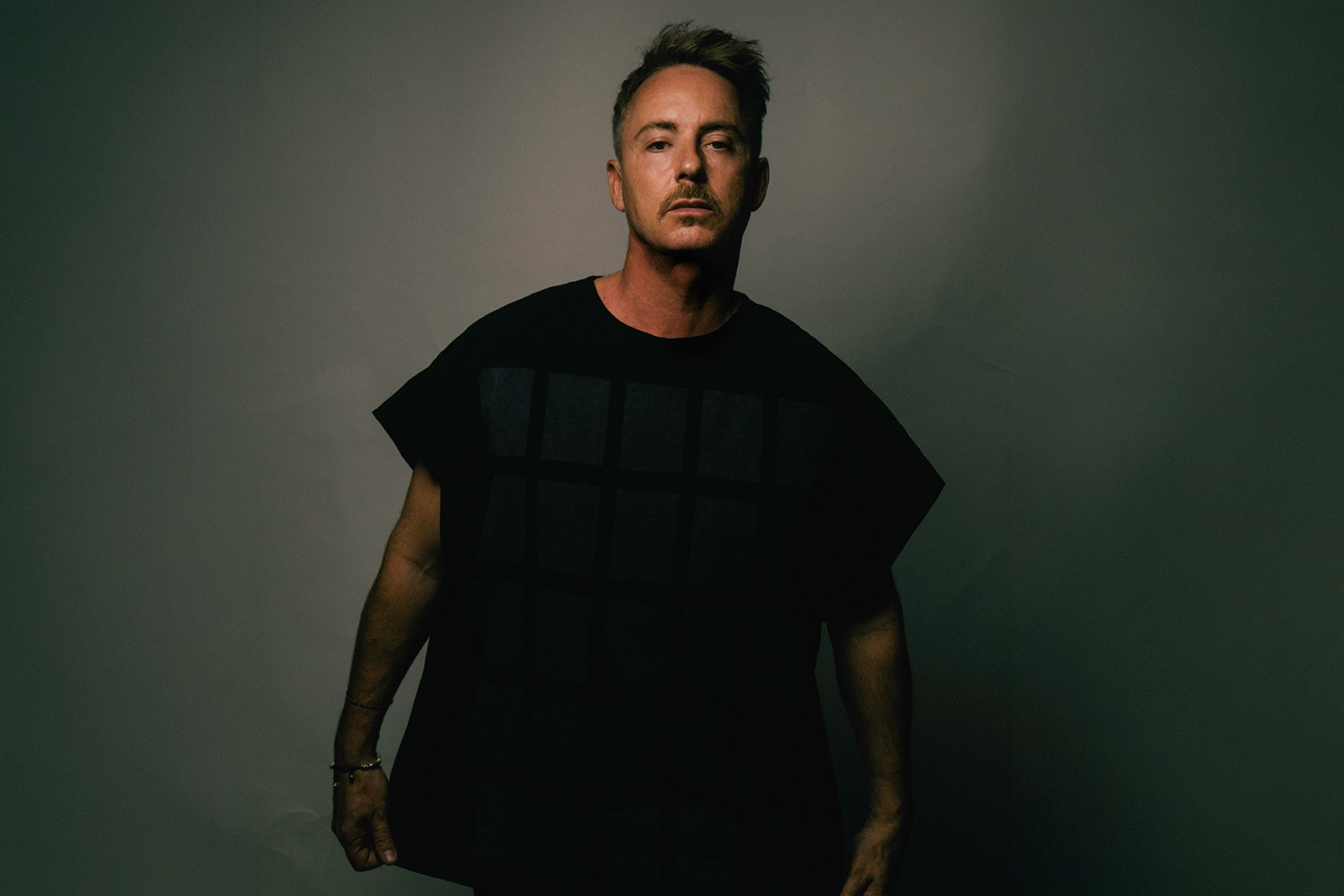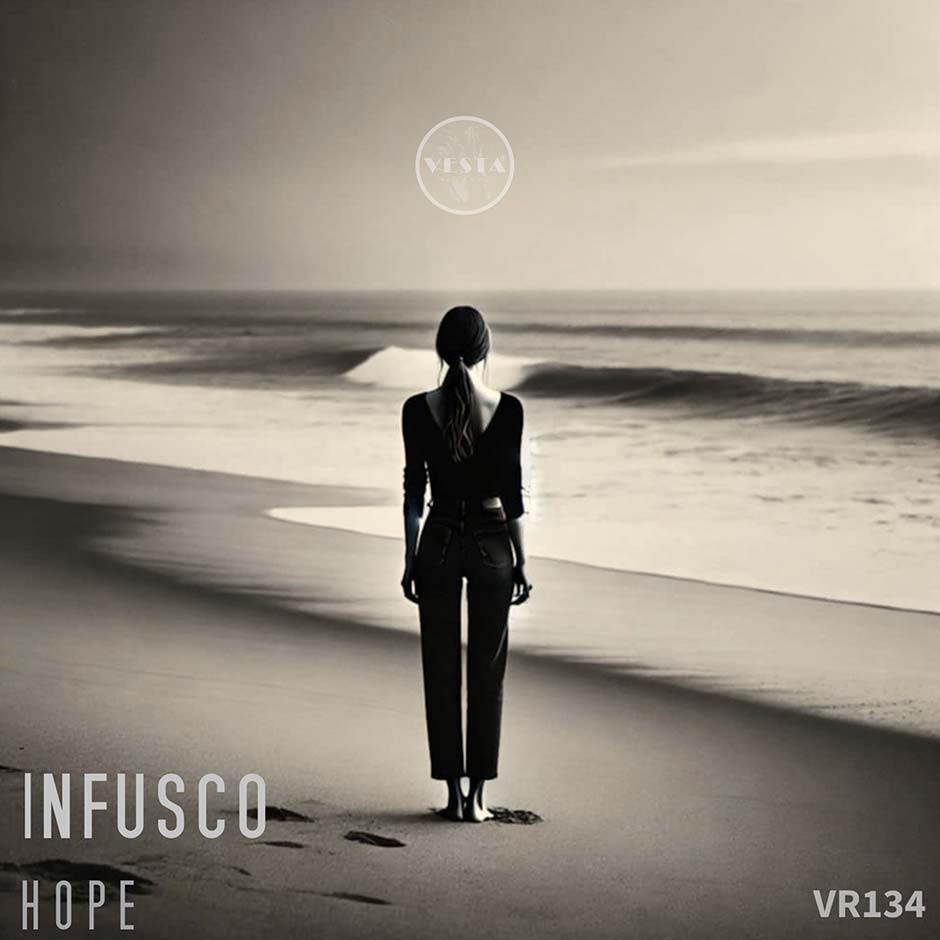In this sincere interview, The Brooklyn Mirage’s new CEO, Josh Wyatt, confirms that the venue will open on time this Thursday, May 1, 2025, with an expanded capacity of 6,300 people, a complete redesign of guest flow, and improved security measures, including guest ambassadors and doubled community patrols.
Photo credit: Brooklyn Mirage – Official
At the very moment I first stepped onto the grounds of The Brooklyn Mirage in August 2021, I instantly declared it my favorite place in the world. When I moved to New York in June 2022, it quite literally became my second home.
The crown jewel of Avant Gardner holds, across its three past iterations—and now entering its fourth—countless stories that have shaped not just New York City’s nightlife and rave culture, but that of the United States and the world in recent years.
As a regular attendee of its spaces, I’m well aware of both its virtues and its flaws. Although I’ve never personally experienced any major issues myself, I’ve often been a third-party witness to the conversations and concerns that swirl among friends and fellow partygoers at different events.
Every three years, in keeping with its philosophy of evolution and versatility, The Brooklyn Mirage undertakes a transformation to reestablish itself as a major epicenter of New York City’s electronic music scene. Now, it prepares to unveil its most ambitious reinvention yet: a full grand opera of construction, its first-ever titled CEO, and a series of guiding principles aimed at reshaping its future—something the team is deeply focused on.
I took the liberty of reaching out to Josh Wyatt, the new head of Avant Gardner—a seasoned hospitality professional and former CEO of NeueHouse and Fotografiska—through my personal Instagram account, after noticing how actively and personally he was engaging with the community online. If you visit his profile, you’ll see him posting step-by-step updates about the ongoing innovations and artist announcements. About an hour and a half after I sent my message, he kindly replied, asking me to send an email so we could coordinate.
The interview took place just two days ago, and throughout it, I focused on asking the very questions that all of us have been eager to know:
1. Whether the venue will open on time?
2. How will the new crowd flow will be managed?
3. What structural and acoustic changes are coming with the use of wood?
4. How are ticket prices and drink costs are being handled and adjusted?
5. What safety measures have been implemented both inside and outside the venue?
6. How does Avant Gardner plan to redefine the experience for its community across the entire campus?
EG: Hi Josh! Welcome to EG and thanks for your time! You’re now the CEO, but I was told you’re the first one ever.
Josh Wyatt: Thanks for the invite. Yes. Yes, I guess that technically that’s true, in terms of, like, “title.” I mean, obviously, you know… people there led the company before, but yeah, technically, I guess I’m the first CEO, and I started back in October 2024.
EG: First, I want to thank you for being so accessible to people on social media, especially on Instagram. It really seems like it’s you personally managing your accounts. I can tell by the way you reply to people.
In the conversations I’ve seen and taken part in across different social platforms, it seems that concerns about overselling events have taken a back seat. What most people are genuinely focused on now is whether Brooklyn Mirage 4.0 will be ready for its debut. With less than a week left, can you confirm that everything will be fully in place for the grand reopening?
Josh Wyatt: We’re opening on May 1, 2025, for Sara Landry, which is next Thursday. We’re also rolling out, as you’ve seen on Instagram and, you know, various press releases and some other hospitality items. We released a campus map a couple of days ago, and we also had a really nice announcement about one of our hospitality partners: Smorgasburg, from Williamsburg. They’re the ones that are going to provide the food on the campus Avant Gardner, alongside several other things that are happening around the campus in addition to just the core of The Mirage experience.
One of the great things about Avant Gardner is that you can always come there and multiple things are happening. Obviously, there’s the main stage, but there’s also a lot of other things… more like a festival experience, where you may be dancing and listening to music for a couple of hours, but then you might want to go eat or just chill out for a little bit. I think in the past, the company had these three different rooms: The Great Hall, The Kings Hall, and The Brooklyn Mirage, which sometimes are connected, sometimes are not. But we wanted to bring it together a little bit more, so we now have an AG Arts space (previously known as The Kings Hall).
EG: So there’s no more Kings Hall?
Josh Wyatt: No more Kings Hall. But the new space is completely redone, and that will be open for CITYFOX’s on Saturday, May 3rd. That day, the new AG Arts is going to be curated by CITYFOX—very much like a nature-oriented music lounge, very chill, almost like a listening room. There’s no bar; it’s a space for vibing and just for the music.
We thought that was something people really wanted. And then we have the backstage area, which we’re going to call ‘The Villa.’ It’ll be open for artists and the electronic music industry on May 1, but we’re probably formally launching it in mid-May or so.
We’re going to have everything ready, but we’re going to stagger the openings of these sub-outlets a few days after the inauguration of The Mirage, depending on how we want to carry out our hospitality.
EG: In that recent episode of The Live Music Industry Podcast, I found very poetic the way you said how everything at Avant Gardner—and its horizons—seemed to align in a way that it “found you” as the person meant to lead it. But from your perspective: how did you find Avant Gardner when you were given the keys to lead its bigger chapter as of today?
Josh Wyatt: That’s a great question. I really respect and appreciate the amount of research you’ve done for this interview.
EG: Thank you!
Josh Wyatt: Yeah! So, I don’t know. I think in my career, I have always wanted to surround myself with either excellent and extraordinary people, or innovative brands. When I left NeueHouse and Fotografiska, I took some time off to be with my children and, you know, creatively refresh.
Anytime you leave a job—or if you have the opportunity to do so, or you’re lucky enough to do so—it’s good to reflect. So, I wanted to reflect and think about things, and I said to myself: “Whatever I do next, I want it to be extremely, extremely innovative and flexible. I want to have a lot of opportunities to do new, interesting things.”
So, I looked, I sat back, and I chose not to take a full-time CEO job. After a lot of searching and being very disciplined about what I wanted, I heard about The Mirage and the fact that it was looking for a CEO. I was fortunate enough to be put in touch with one of the founders, Billy Bildstein, and one of the ambassadors at the company.
We hit it off and found and shared respect and passion for this company. I think anyone who touches this company, whether it’s a part-time employee, a seasonal employee, all the way up to investors, the board, and me, everyone falls in love with it. Maybe that’s a good or bad thing, I’m not sure, because sometimes being too passionate about where you work can have its ups and downs. But that’s definitely what I always try to find when I work with someone or for a company.
“Our core product is dancing and listening to music”
EG: Is it just me, or have prices pretty much stayed the same? Some people are still saying that all these improvements to The Mirage will eventually translate into higher ticket costs for the audience. I’ve already booked parties from May to October, and considering the quality of the artists I’ve booked as of today, and the overall experience, I’m paying about the same as last year, and even the years before. Are these upgrades that The Mirage does every certain time being absorbed by the company rather than passed on to the audience through higher prices?
Josh Wyatt: I love that question. Again, thank you for really thinking through things. I mean, that’s exactly right. So, from a pure data perspective—I’m a data-driven person as well as creative—you can’t argue with math. The math doesn’t lie.
If you look at the ticket prices that we’re charging and compare them with the last three to four years, and even if you factor in inflation and what’s happening in the nightlife industry—where people used to pay US$20–$30 cover charges and now are paying double or triple at other venues—we’ve held prices the same.
So, in 2025, with the new Mirage and the huge, massive financial investment from the company, we’ve kept the prices the same.
More interestingly—and this is led by me and the excellent operations team—we’ve had a really strong debate about pricing the drinks. We obviously read customer feedback, and I think it’s interesting sometimes, but also frustrating and disappointing to read feedback that says, “It isn’t true.” There’s a lot of people out there saying, “They’re going to take our money…” It’s simply not true.
We’re charging less, in terms of drinks, than any of our neighbors in the area, and certainly a lot less than in Manhattan. Our entry-level drink is US$15. If you go to any other place, it would be from US$16 to US$20, and I won’t name specific competitors, but sometimes it’s even higher than that.
We’ve gone through the menu and priced it reasonably. In fact, we actually lowered prices on a lot of our options for this year. Again, there’s a lot of perception versus reality on this. Some guests and fans maybe haven’t done the research, but I’m hoping that when they show up, they really see what we’ve put on offer for everyone.
EG: Good to clarify. I think I’ve never seen such engagement as the one sparked by that public letter that was posted on the main social media account in December of 2024. Avant Gardner is a second home for many, including myself, quite literally.
In that letter, you really struck many chords on several levels with the seven principles that are supposedly meant to embed across everything this new generation of the venue is set to represent. To arrive at those, how did you become aware of the issues the venue was facing in terms of reputation? Did you conduct surveys, personally reach out to users, or audit social media interactions? How was awareness around the venue’s public perception being measured? Was it very clear what was going on?
Josh Wyatt: From a management perspective, I’m not a huge fan of surveys. We did not do surveys. Now, that’s okay. There are a lot of experienced management teams, CMOs, and CEOs that live and die by surveys… I deeply respect that methodology, but personally, I believe that in hospitality, you have to form a point of view as an entrepreneur, founder, or CEO within the space.
We chose not to do surveys because the existing staff, when I came in, really knew the product and knew the customer. I felt that the overall dance and rave community—who’s always been extremely communicative—had made their voice known. It was pretty clear: if you read Instagram, Reddit, TikTok, LinkedIn, and YouTube, it’s easy to understand where the customer pain points are.
So, the team and I did a lot of studying on that… although honestly, it wasn’t that hard to get the data. And then individually, I did a lot of mystery shopping before I got the job. I went into the General Admission, alone, and no one knew who I was. I went through the experience. I, like many others, made comments and observed some weaknesses within the customer journey.
It’s no secret that there were shortcomings, especially in terms of how security approached its job—just to be clear, many people don’t understand that security work in nightclubs is done by a third-party company, but the customer doesn’t know that.
Our job is to identify the pain points and tackle them from different angles. Coming out with the CEO letter—and with more communications coming in a few weeks about what we’re doing—is just an authentic, transparent attempt to create a great customer experience and set the goals.
Now, are we going to meet every single promise? We’re certainly, definitely going to try. I’m sure we’ll fall short in a couple of areas, because no company is perfect, but we are definitely setting the standard pretty high, and we’re going for it.
I think the first couple of weeks… sure, we’re going to have teething challenges. I mean, when you put 6,000 people through the doors for more than six hours, and they’re already dancing for five, stuff is going to happen, but we’re doing our best to really design a very smooth, safe, secure, and most importantly, emotionally welcoming experience.

EG: About having room to dance—which is actually the most important topic for many—I read in other media outlets official news saying that the capacity is increasing from a little over 4,000 to somewhere above 6,000 people. Does that number include all areas of The Brooklyn Mirage, from the General Admission to the VIP balconies, and the second and third floors we see in the renders? Or is that figure only referring to the ground level?
Josh Wyatt: I want to make one clear clarification. So, I know there’s something circulating that’s not correct—like a very old article that somehow sort of floated out—but the capacity of The Brooklyn Mirage was 5,250 people, and the new capacity is a little over 6,300. That’s our fully legal and permanent capacity, and it has gone through all the proper city channels. I think that’s an important thing to note.
In terms of what that means, that number is for The Brooklyn Mirage structure itself. The plan includes the ground floor and all the different areas of the structure, going up to the first-level mezzanine, which is VIP, and then the third and fourth levels, which are general admission, along with the ground floor.
The overall space of The Mirage, in terms of square footage, or whatever you want to call it, is probably—I don’t have the exact number—about 50% bigger.
I will say, the team and I find it extremely humorous that people online are commenting that the dancefloor is smaller. It’s hilarious. You’re going to lose your mind when you come and see this—it’s just like, no! It’s bigger, but the way it’s designed actually feels intimate. At the end of the day, you want to be able to dance and have freedom to move, but you also might want to meet people, you know, build a tribe together, whatever you’re there for. So, there’s a whole bunch of different places within the structure that are pretty full of hangout areas.
EG: I saw a Reddit thread where someone pointed out, using Google Maps footage, that it’s going to be the same size or even smaller than the 3.0 generation. But then another thread, responding to that first one, showed that actually, you cut out part of The Kings Hall room—
Josh Wyatt: Yeah, I saw that post.
EG: —And part of the little tower where people used to go smoke and enjoy the view. It really looks like it’s going to be massive. Users who have been walking around the area have been replying to those who don’t believe it’s getting bigger, saying things like, “Hey, this is really going to be big,” because the angles of the photos being taken don’t really help people build an accurate idea in their heads of how much the space has expanded.
Josh Wyatt: I saw that post. Someone made a comment about a smaller dancefloor, and someone superimposed new aerial drone footage over the old map. And, you know, it was a healthy debate among the Redditors that I found quite interesting.
But whoever said it, they were correct. That person who started that last thread probably had an engineering and/or architectural background because they definitely knew what they were talking about. They studied the whole street grids of the block and did the math.
And yeah, the management team and the CEO are telling the truth, which is that we have dramatically expanded the dancefloor and the whole structure. We cut about 30% off the formerly known as The Kings Hall, and, yeah, it’ll give a fundamentally different experience.
“We’ve invested massively into the venue, and we made a deliberate choice not to pass that cost onto our guests”
EG: And just out of curiosity: how many people can fit if we count the DJ booth too?… (laughs)
Josh Wyatt: (Laughter) That’s a good question! I don’t know. I can’t answer that, not because of—
EG: You wouldn’t cross the capacity limit of The Brooklyn Mirage? The plan is to never exceed the capacity limit? (laughs)
Josh Wyatt: No, no.. (laughter). Again, this is another thing that I want to make sure gets reported: the company has always followed the rules.
This year and last year as well, certain things were involved, and when the city officials were looking at overcrowding, the company was monitored by officials. And yes… the perception of overcrowding is something that comes from an individual’s opinion, but that opinion is oftentimes based on emotional reactions to large crowds.
Or, in the case of the last Mirage, it wasn’t designed efficiently. It was always legal—just to be clear. The actual checking process, and how they clicked everyone in, always met regulations, and they had multiple agencies overseeing entrance. But the reason it felt overcrowded was because of the way it was designed. It was very difficult to get people in and out and flowing between all the different areas. So, we redesigned it.
We really studied that, and we asked to ourselves: “Hey, where’s the bottleneck? Where are the pain points?” And we really worked to create a much better flow of people. I think when people show up next week, they might not immediately understand it, but hopefully they’ll feel it, like: “Oh, I get it. This is how the whole thing flows.”
EG: How do you see the crowd flow exactly? I’m the kind of partygoer who doesn’t like to move once he finds the perfect spot—not even to go for a drink—because I don’t want to lose the connection with the music.
I know the mezzanines are made to complement the ground level and to offer different perspectives. But sometimes I feel like people are just like me, and they want to stay stuck in their spot at ground level. Do you see people moving straight to the mezzanines, or do you expect more movement around the whole venue? Help me create an image of it.
Josh Wyatt: We really designed this to be like a journey and to lead to explorations. Probably some people are like, “Okay, I want to be close to the DJ, and I’m going to set up camp in front and enjoy my night because I’m only here for the music.” Other people come for more social reasons, like, “Hey, I want to walk around, I want to see what’s going on and meet some people,” and some people are more restless, like, “Look, I want to go on my side quests…”
When I used to go out—maybe not so much now because I’m older—but when I was younger, sneaking out with my crew, honestly after one or two hours I was like, “Okay, I’m with my crew, but I want to go meet people, see who’s around.” It depended on what was in my mind that night, what my emotional needs were. Maybe I wanted to meet a girl, maybe hang out with some interesting people, maybe try to meet the DJ—whatever it was. So, we wanted to design it so that a lot of different things could happen.
I’ll tell you what we didn’t want it to be: we didn’t want it to feel the same every time you come. If it’s the same every time, that sounds super boring to me. You should be able to come—let’s say you come to CITYFOX next Saturday—you should be able to stay on the main general admission dancefloor, have a great time with your crew, and say, “Hey, that was an amazing experience.”
And let’s say you come back the next weekend for Cloonee, and maybe this time you come alone. Maybe you’re just there for the music, and you’re thinking, “You know what, I worked really hard this week. I’m going to chill at the mezzanine, have a beautiful view, grab a drink, and let the music take over.” That could be another experience.
We want to work with the different emotional needs of each person because you don’t feel the same every weekend, and the shows are different too. We have different spaces designed for the fans.
EG: Let’s talk about the materials that make up and will eventually finish off this Grand Opera. To intro, was wood a part of previous Mirage builds, or is this the first time it takes center stage structurally?
Josh Wyatt: The previous Mirage—depending on how you think about the evolution of The Mirage—because it’s been around for ten years, right—it really started out as a warehouse/parking lot rotating party. And obviously, over the years, it evolved into a more permanent space, and then in 2022 it came out with this massive LED-centric videowall, surrounded by vestiges of its old self.
Those vestiges were built with a combination of scaffolding, some steel, and a lot of plywood. It was fully legal, to be clear, but it was not the highest design structure.
When we had the opportunity to redesign this from the ground up, we asked ourselves: “What is the strongest, sturdiest, yet sound-supportive material we can use?” We had a lot of super, super talented people on our team—and people who consult globally—and we studied that carefully. We could have built with steel, with concrete, with recycled timber… but we chose to build with a concept called CLT (Cross Laminated Timber.)
CLT is a prefabricated timber methodology that’s typically used in big events like F1, the World Cup, and in 2025 at the global Expo Osaka, Kansai, Japan, they’re putting up the largest ever CLT structure, something like 180,000 square meters of CLT wood.
EG: What are the properties and risks in terms of flammability, structural integrity, and sustainability, sonically speaking?
Josh Wyatt: The reasons we’re using CLT are threefold:
1. It’s completely sustainable. It’s carbon positive. As you know, concrete is extremely destructive to the environment. CLT is very environmentally friendly.
2. CLT—and you can Google this if you don’t believe me—has a higher tolerance to heat than steel. It’s harder to burn CLT timber than it is to burn steel. Again, if you just look at the photos and don’t understand construction methodology, you might think, “Oh, it’s wood, it burns.” But that’s not true. Structurally, it’s safer than going with steel in terms of fire resistance.
3. And most important from a fan experience perspective: it’s incredible for sound. It’s probably the best material you can use to balance and layer sound naturally. It’s funny to think about it, but the heavy timber structure enhances the overall physical experience of that lower bass frequency, and the way the sound flows feels much more natural compared to steel or concrete, where the sound just pings around everywhere.
The new Mirage is going to be an incredible melodic vibrational sound within the structure.
EG: And in terms of assembly and reassembly?
Josh Wyatt: The Brooklyn Mirage is a temporary structure, from a permitting and legal perspective, and that’s an important point again. There’s always a misperception. We always follow all the regulations of the city. We have respectful relationships with the city, the community, local officials, DOT, NYPD, and the Fire Department. So, you know, this structure is designed to appear, disappear, and reappear.
There’s a lot of chatter out there about whether we’re going to open on Thursday, May 1, but what they might not know is that our team has been doing this for ten years. They know how to put something together quickly. I accept that it looks daunting, like when you have 3,000 LED tiles to assemble, but the team has done it a hundred times. This is not their first rodeo.
To be able to go and build a vertical or horizontal LED frame… it may look like rocket science, but it isn’t. The team is one of the best in the US, if not one of the top three teams in the world.
EG: I just want to point out that it’s been confirmed that The Brooklyn Mirage will be one of the largest timber constructions in the country. Does that make you feel proud in some way?
Josh Wyatt: The response to that question is that the company has been through a lot of challenges, and we wanted to innovate with something, both technically and acoustically, the latter meaning we wanted to be best in class. And then, I’m a hospitality guy, so I’m leading with my hospitality side of things. We just want to be very proud of what we do, and I think we will be.
I mean, yeah, I can’t wait for next week.
EG: I don’t know much about equipment and sound—I’m just a regular partygoer, but very sensitive to music, especially house music. There was a comment I came across from a DJ and producer I really admire, Jason Douglas, who pointed out how significant the upgrade from KV2 to L-Acoustics is—he called it a “huge step forward.” He also asked something I found interesting: how did you decide to go with L-Acoustics instead of d&b audiotechnik? What were the factors you weighed when choosing a new system for Mirage 4.0?
Josh Wyatt: Amazing! That’s a great question. Big picture: if you want to build something that stands the test of time and you’re truly trying to set up your company to be best in class, you must partner with best-in-class providers, and you really don’t want to cut corners.
So, what is our core product? Our core product is dancing and listening to music. The audio quality of what people hear completely defines what the evening becomes, in parallel to the dance experience. The dance experience is the physical venue, but the audio experience is determined by the technical packages you put into the venue, and we think L-Acoustics is the best in the business.
We partnered with them, and we just went for it.
EG: Oh, it’s a partnership.
Josh Wyatt: Yeah.
EG: From what I understand, the venue is built similarly to how festivals are built, right? The difference is that this is a venue, so some elements—like the video wall—are only removed for a short period, while others—like the mezzanine structures and floors—stay in place for up to three years. I’m asking this because of the one-month timeframe you chose to start assembling the whole new Mirage at the beginning of April 2025.
Josh Wyatt: There’s a lot of misconceptions about how products are built. People don’t understand or don’t know about prefabricated methodology, and they think it’s the traditional way of building.
If you build traditionally, yes, it will take three years to build. But what we’ve already done is more like Lego: we built it over in Europe and in some shops in Brooklyn, and then we shipped it over to the site. We control a huge parking lot close to the campus—it’s about a one-acre parking lot—and we literally staged The Mirage in that space for the last three months.
So, when people online say, “They can’t get it done on time,” “they just started in March,” and “the way things are built usually takes two years…” yeah, sure, if it were traditional construction using ground-up methodology with no type of prefabrication.
And that’s my other point with CLT: CLT is a very sophisticated way of manufacturing. And when you combine that with what we call “just-in-time inventory management,” which is a very traditional method in manufacturing where you don’t hold expensive things on your books, you can build very quickly.
This is one of the most sophisticated prefabricated, CLT-based projects in the US—and maybe in the world. It’s pretty amazing what we’re accomplishing here.
EG: I’ve always wondered if the team has ever considered some sort of ceiling rooftop structure. I’m not sure if that idea would go against the philosophy of the venue. A roof could also open the door to year-round bookings, especially when combined with the use of the other rooms.
Josh Wyatt: Never say never. Things change. We haven’t really thought about it, to be honest.
This is an open-air venue, not only because of strategy but also because of legal permitting. For us to outline our briefs for legal permitting—and with all the laws and everything in New York—we are required to go through a different type of thinking when it comes to putting up any type of permanent, or even semi-permanent, roof.
It would probably raise permitting issues and permitting questions. That’s something where we have to respect the rules. We can’t just pop any type of permanent-looking roof on top of it.
Now, rules change. Rules evolve. There are certainly ways to lobby and change that. Maybe that’s something we could pursue in the future. But for now, we love the outdoor setup. I think we have a really good balance with the rooms besides The Mirage, which do have their roofs.
EG: There’s a certain level of trust that we place in the nightlife and entertainment industry every time we go out to enjoy ourselves. It’s a win-win relationship between the guests and the partymakers—but ultimately, it leans more heavily on the organizers when it comes to ensuring we get home safely. One of the biggest concerns that attendees have is about overall safety, both inside the venue and around the neighborhood. Beyond the technical improvements to The Mirage itself, what new structural, logistical, and hospitality measures are being implemented to make the experience safer, more welcoming, and more respectful for everyone?
Josh Wyatt: We studied all these points, and I touched on some of this in the CEO letter posted in December. We’re well aware of the customers’ pain points.
Big picture response, strategically and mathematically, is that when I became CEO, this was really my big focal point: to improve the customer experience with a safe, secure, and hospitable environment.
Microwise, the way I view this is that we have a number of change initiatives that are rolling out starting next week when we open. The goal is to try to get this all right from day one, but this takes time and resources—and there are also government permits and processes that don’t get done in a day.
Let’s talk about security. Avant Gardner was overfocusing on security, which is good. It actually always legally exceeded the number of required security guards that the code demands. However, what it didn’t do was manage or train the guards. You know, again, it’s a third-party security company, and it didn’t train the guards to have a hospitality core ethos.
So, there were times when somebody had unfortunate and unpleasant experiences in terms of how security was handled. First, it starts with training. Then, it starts with ensuring how the searches are done and how it’s communicated. We overhauled that.
The second thing is neighborhood patrol. While we can’t control what happens when someone leaves the four walls of Avant Gardner and The Brooklyn Mirage, we certainly spent a lot of time in the community trying to make the whole neighborhood safer.
We spent money and worked with the local community and the commissioner to install signs around the neighborhood with directions to rideshare pick-up points and the subway. So, if you get out of the subway, we have maps up, which we paid for.
We also worked with rideshare companies to install much better geolocated rideshare drop-off points. Previously, it was very confusing where you actually got dropped off. We clearly worked with Lyft and Uber on all that, and now we have signage put up all over the place. Also, regarding community patrol: we had one car patrolling until 6 in the morning. We doubled that this year.
From a health and safety perspective, we have always had medical support with Paradox, a fantastic medical company. This year, we’re using them again, and we’re doubling the number of medical assistants, plus we now have a second ambulance that idles inside for the larger crowds.
When you put 6,000 people together, of course, you will need medical assistance, so we wanted to be fully prepared for that.
Finally, we’re rolling out the “Guest Ambassadors.” Instead of hiring 20 extra security guards above what we’d normally need, we have 45 Guest Ambassadors for the venue. They’ll serve as first responders to customers’ needs—whether someone is lost, needs water, is looking for the show, or trying to find the stairs.
We now have 45 people, trained by us, practicing hospitality first. They’ll be rolling out on May 1, wearing a beautiful, highly visible floral costume designed by a Brooklyn designer—really cool.
We’ve done a lot, and there’s more to come. We’re working on expanding the cellphone signal and Wi-Fi, but that requires permissions. That will probably be ready by June.
So there are a lot of enhancements that will be ready from day one and continue rolling out over the next 60 days.
EG: To conclude, what do you want people to feel when they walk through those doors after May 1st, 2025?
Josh Wyatt: Joy, passion, awe, and acceptance!
EG: Amazing! Thanks for your time!
Josh Wyatt: That was great! I really appreciate it!
The Brooklyn Mirage is set to open on May 1st, 2025, with Sara Landry’s Eternalism. Grab your tickets here.





